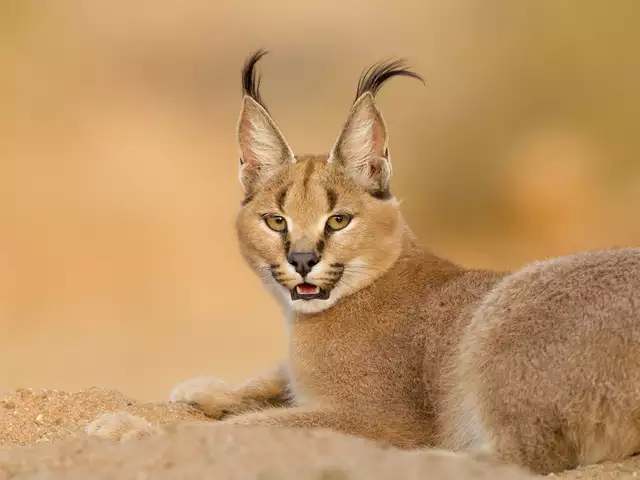Table of Contents
Context: Recently Rajasthan’s Forest Minister shared the first photographic record of a caracal in Mukundra Hills Tiger Reserve (MHTR).
About Caracals: The Rare Wild Cat
- Caracals are medium-sized wild cats native to Africa, the Middle East, Central Asia, and South Asia.
- They are primarily nocturnal and known for their distinct, pointed black ears.
- Its name is derived from the Turkish word ‘karakulak’, meaning black ears.
- Caracals are mentioned in medieval Indian texts like: Khamsa-e-Nizami, Shahnameh & Tutinama.
- They were used by Indian royalty for hunting birds.

Conservation Status
- WPA – Schedule I.
- IUCN – Least Concern.
- It is listed in the Critically Endangered category by the National Board for Wildlife in India.
Sharp Population Decline
- Historically caracals were found in 13 Indian states.
- By 2000 → Population reduced by 50%.
- From 2001 to 2020 → Further 95% decline.
- Now restricted to an area of 16,709 sq km (less than 5% of its historical range).
- Currently, only 50 caracals remain in India, found in only 2 states- Rajasthan and Gujarat.
Threats to Caracals
- Loss of habitat due to urbanization and infrastructure development.
- Reduced prey availability (small ungulates, rodents, birds).
- Encroachment into natural habitats, particularly the Chambal ravines, which are classified as wastelands instead of ecologically significant areas.
- Illegal wildlife trade: Caracals have been captured and sold as exotic pets.


 Bonnet Macaques: Habitat, Features, Beha...
Bonnet Macaques: Habitat, Features, Beha...
 Periyar Tiger Reserve, Map, Flora, Fauna...
Periyar Tiger Reserve, Map, Flora, Fauna...
 Project Cheetah in India, Objectives, Ch...
Project Cheetah in India, Objectives, Ch...

























